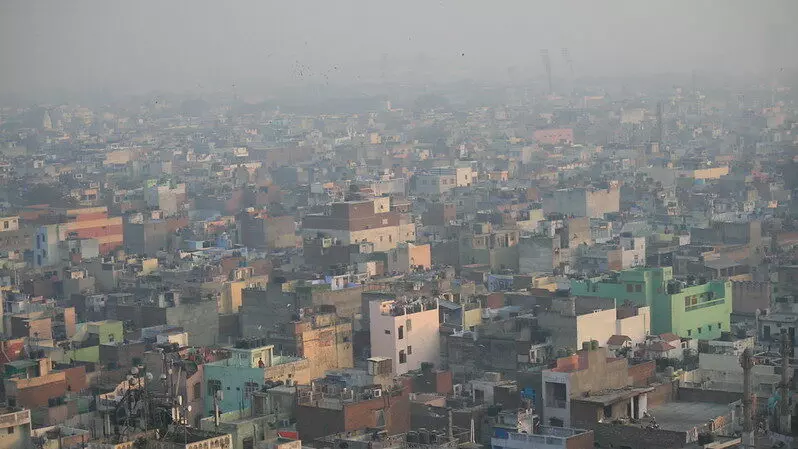
World Cup 2023 | Half of matches hosted at venues with high pollution levels
Delhi was the second most polluted city in the world behind Lahore on Nov 6 when Sri Lanka played against Bangladesh at national capital

When the recently concluded ICC World Cup 2023 witnessed a clash between Bangladesh and Sri Lanka on November 6, the players of both teams also had an opponent outside the cricketing arena – the hazardous air of New Delhi.
The alarming level of pollution forced members of both teams to either stay indoors or step out wearing masks. Poor air quality also compelled them to cancel some training sessions and conduct some others with face masks on. Some Sri Lankan players did not turn up for practice as they were asthmatic.
There were also speculations that the match may get cancelled due to poor air quality. Had that happened it would have been the first instance in World Cup history that a match got cancelled due to AQI concerns. Incidentally, Delhi was enveloped in a thick blanket of smog and was the second most polluted city in the world on that day, behind Lahore in Pakistan, according to air quality monitoring group IQAir.
The concentration of PM 2.5 in New Delhi’s air was on average 261 micrograms per cubic metre (μg/m³) on November 6, as per a Reuters report. This “very unhealthy” air was seven times higher than what the US Environmental Protection Agency (EPA) considers good or moderate, and more than four times higher than Indian standards. Based on the EPA’s 24-hour standards, an average concentration of PM 2.5 of more than 35.4 μg/m³ is considered “unhealthy”.
The air was filled with other pollutants as well – including Nitrogen Dioxide, primarily emitted from vehicles. The WHO recommends a 24-hour average of less than 25 μg/m³ of Nitrogen Dioxide. However, readings shot up to as high as 258 μg/m³ at the monitoring station closest to the stadium, which is adjacent to a busy traffic junction, on November 6.
Different venues, same concern
However, the scenario was no better in other venues across eastern, southern and western India that hosted the World Cup matches this season. According to Reuters, at least 20 of the 47 matches were played in “unhealthy” air while another 11 matches were played in air considered “unhealthy for sensitive groups”. England player Joe Root said it felt like they were “eating the air” in Mumbai while test captain Ben Stokes was seen using an inhaler in a training session ahead of a match in Bengaluru.
Matches played before and on the Diwali festival on November 12 witnessed very high levels of night-time pollution due to firecrackers. The BCCI, in a bid to curb pollution, banned fireworks in post-match celebrations, while the Delhi government also initiated measures like banning some diesel vehicles and construction activities, apart from using water sprinklers. But, it didn’t help much which was evident from the fact that several school-level sporting events in Delhi were cancelled due to high pollution levels.
Notably, the Indian subcontinent has often struggled with seasonal air pollution which has taken a toll on sporting events in the past as well. According to a Reuters analysis of satellite-based atmospheric data, air quality during cricket World Cup matches held in India, Pakistan and Bangladesh have been worse compared to other venues in previous tournaments.
Interestingly, the International Cricket Council (ICC), the global governing body of cricket, does not have specific guidelines to deal with air pollution. It treats pollution similar to other weather events, allowing umpires to call a game off if they agree the conditions are not conducive.

